Open ReqIF requirement files
4 min read
last updated: 03/16/2023
ReqEdit is used to display contents of ReqIF requirement exchange files including attachments and images in ReqIF Archive files.
These are the key features:
- ReqIF requirement objects
- hierarchy structure
- Internal UUIDS
- attribute types
- specification attributes
- object attributes and relations
For experienced users the XML Editor add-on can display the source code of the ReqIF file.
Supported RIF/ReqIF file extensions: RIF contents (.xml .rif .zip) or ReqIF content (.reqif .reqifz)
You can open decrypted *.reqedit files too, if you know the password. More about encryption / decryption read here.
More about RIF and ReqIF files read here.
Open file
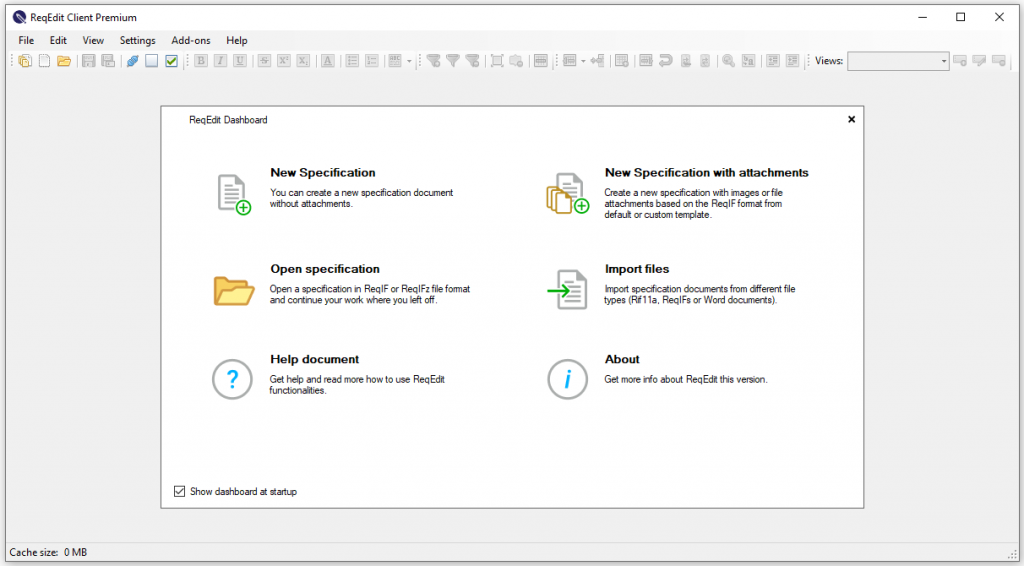
To open a file
- click on the Open Specification on the Dashboard or
- select File > Open on the main menu or
- press CTRL+O and then select the ReqIF file.

All containing specification documents are displayed as tabs in the tab bar.

Compatible ReqIF files
If the file is not a standard ReqIF file but ReqEdit can import it, a popup notifies the user. Import wizard starts and completes the steps to open file.
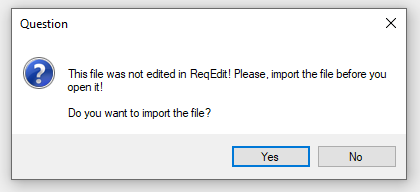
Multi ReqIF Archives
If the opened document contains multiple ReqIF files (is an archive format .reqifz or .zip) a popup notification allows the user to select the files to open.
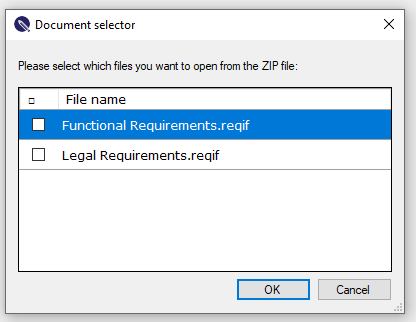
In case of any ReqIF errors, ReqEdit identifies the errors. Use XML Editor Add-on to correct.
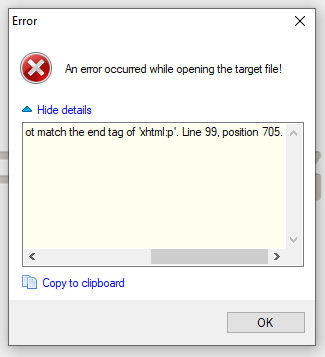
ReqIF file format
ReqEdit follows ReqIF standard on all levels. It will display contents of ReqIF files from structural to attribute definitions.
ReqIF format
Attribute Types
atomic data types: boolean, date, enumeration, int, float, string, xhtml
Attributes
uses the basic attribute type definitions with optional restrictions: min, max, length, can be defined for objects and specifications also
Object types
collection of attribute types that are grouped together
Objects
uses a specific object type and has values for each attribute
Values
value objects for attributes of objects or specifications
Specification Types
a collection of object types and specification attributes
Specifications
uses a single specification type
Hierarchy
requirement object structure inside a specification
Relations
links between the objects
Documents
ReqIF requirements are grouped into specification documents, these are displayed in the tab bar. Each opened ReqIF file will have its own random color to indicate that the files are together.

Hierarchy
Each specification document has its own object structure which is shown in the navigator tab.

The navigator can be used to quickly jump to a specific section in the specification document.
Numbering
Automatically generated for each ReqIF.ChapterName which are used as headlines. Depth is determined by child objects.
Objects
Each row in the main content area is an object that has a Main Content and additional attributes. Objects are displayed as follows
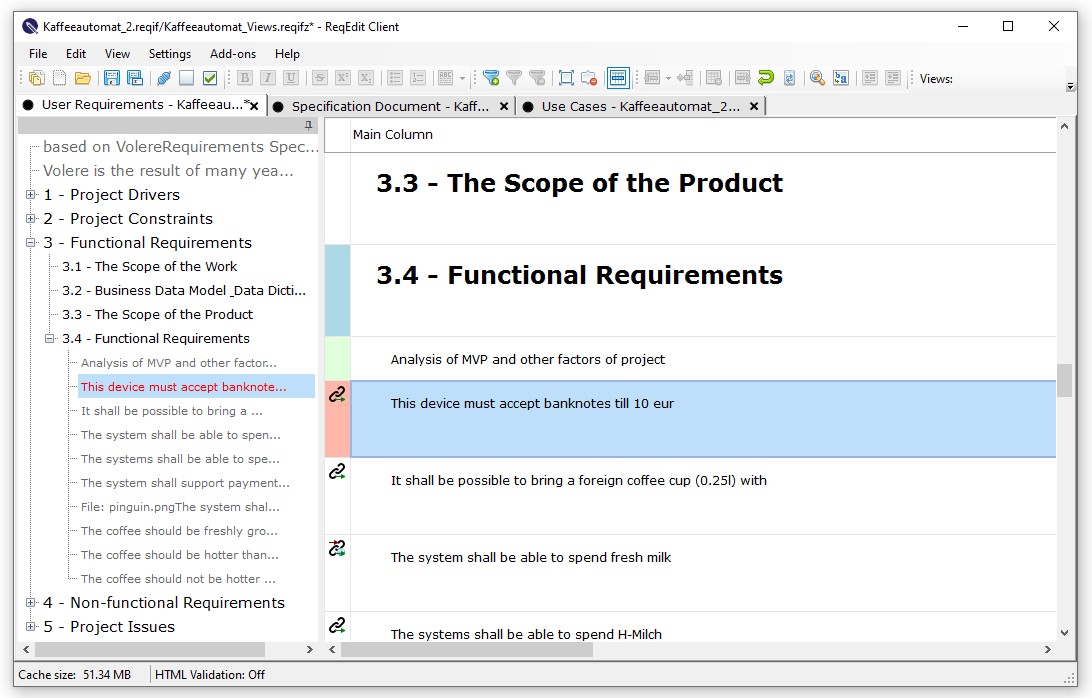
not changed (white), edited and saved (blue), new not saved (green), deleted (red), with links (link icon, in, out, external)
Status indicator
First column of the grid is a frozen column, which means that the user will always see the column, even if the document will be scrolled horizontally.
Displays the following states:
- unchanged – marked with white color
- edited – marked with light green
- edited and saved – marked with light blue
- links – marked with link icon
- internal links
- external links
- URI / OSLC
- Inward / Outward
- red – soft deleted (can be recovered)
More about Editing objects you can read here.
Attachments
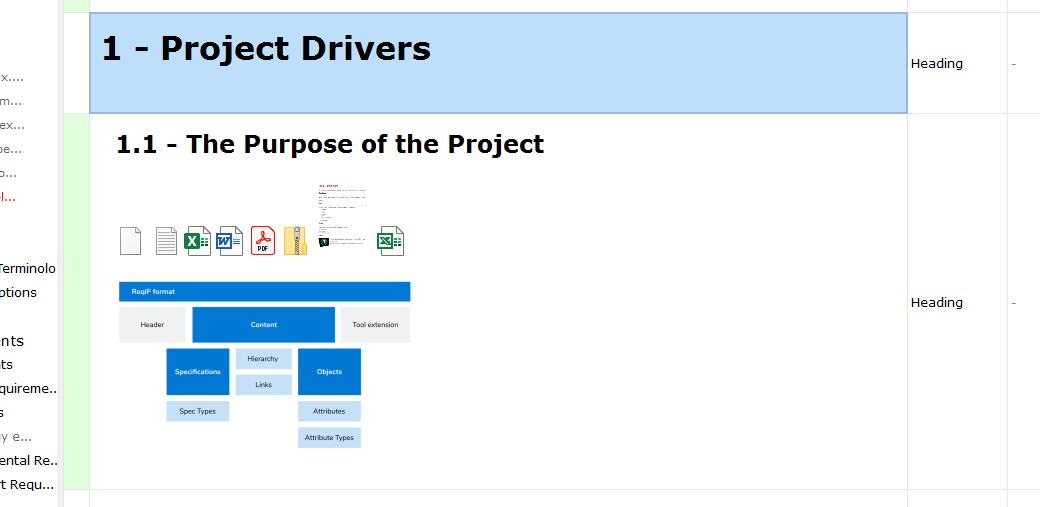
Double-click on the icon. The attached file will be opened by the installed applications on the machine.
Attributes
Object attributes are displayed as columns inside the data grid. The default column layout starts with Main Column then the rest of the object attributes defined in the specification.
By default all attributes are displayed in the specification as texts
Main Column
Displays the the main ReqIF attributes: ReqIF.ChapterName, ReqIF.Name, ReqIF.Text as a single cell where
ReqIF.ChapterName – is displayed as Headline and will be auto numbered, displayed in the navigator
ReqIF.Name – displayed in the content area as text
ReqIF.Text – displayed in the content area as text
The main column rendering can be customized in the Settings > Document menu
Attribute columns
All columns can be set hidden / visible by right clicking on the column name row.
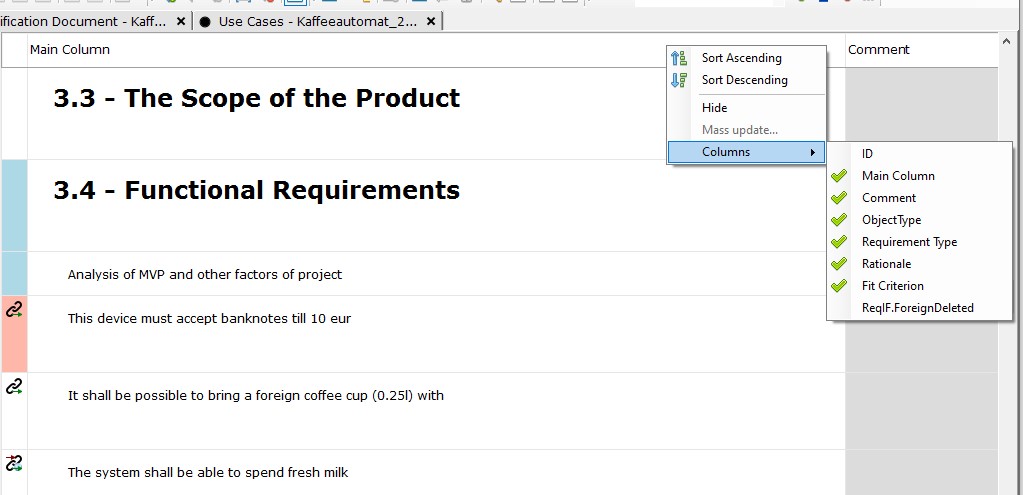
Attributes used in the current specification document can be displayed by opening Setting > Document and selecting the Attributes tab.
Related topics: